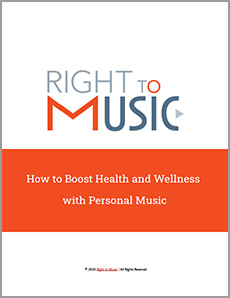If you’re young or adept at tech, changes in music delivery are no big deal. Streaming music on Sirius XM, Pandora or Spotify is intuitive. Setting up an iTunes playlist and updating it may seem routine. But for the millions with dementia living at home—perhaps confused, agitated, isolated, sad—making that connection to music that has meaning in their lives takes a special effort. So does ensuring that they can access their music day after day, month after month.
Do aides need to be trained? Are family members available who can manage the technical aspects of delivering the music? And if your loved one with dementia is in assisted living or a long term care community, how can they access musical favorites? How can you help?
There are many resources available, from streaming services to apps for playlists, as well as a raft of delivery systems (think Alexa or Siri, for starters). There are music devices especially for people with dementia, different listening options, and a variety of speakers and headphones. In addition, there are comprehensive personal music programs for care organizations like Music & Memory.
Which approach works best for your loved one or organization? What are the pros and cons of each in your situation?
Learn more in our free guide,

How to Boost Health and Wellness with Personal Music
Send download link to:
I’d be honored to share what I’ve learned about how favorite music can improve quality of life for those in your care. Please contact me, Dan Cohen, to discuss your needs and arrange for a presentation.
